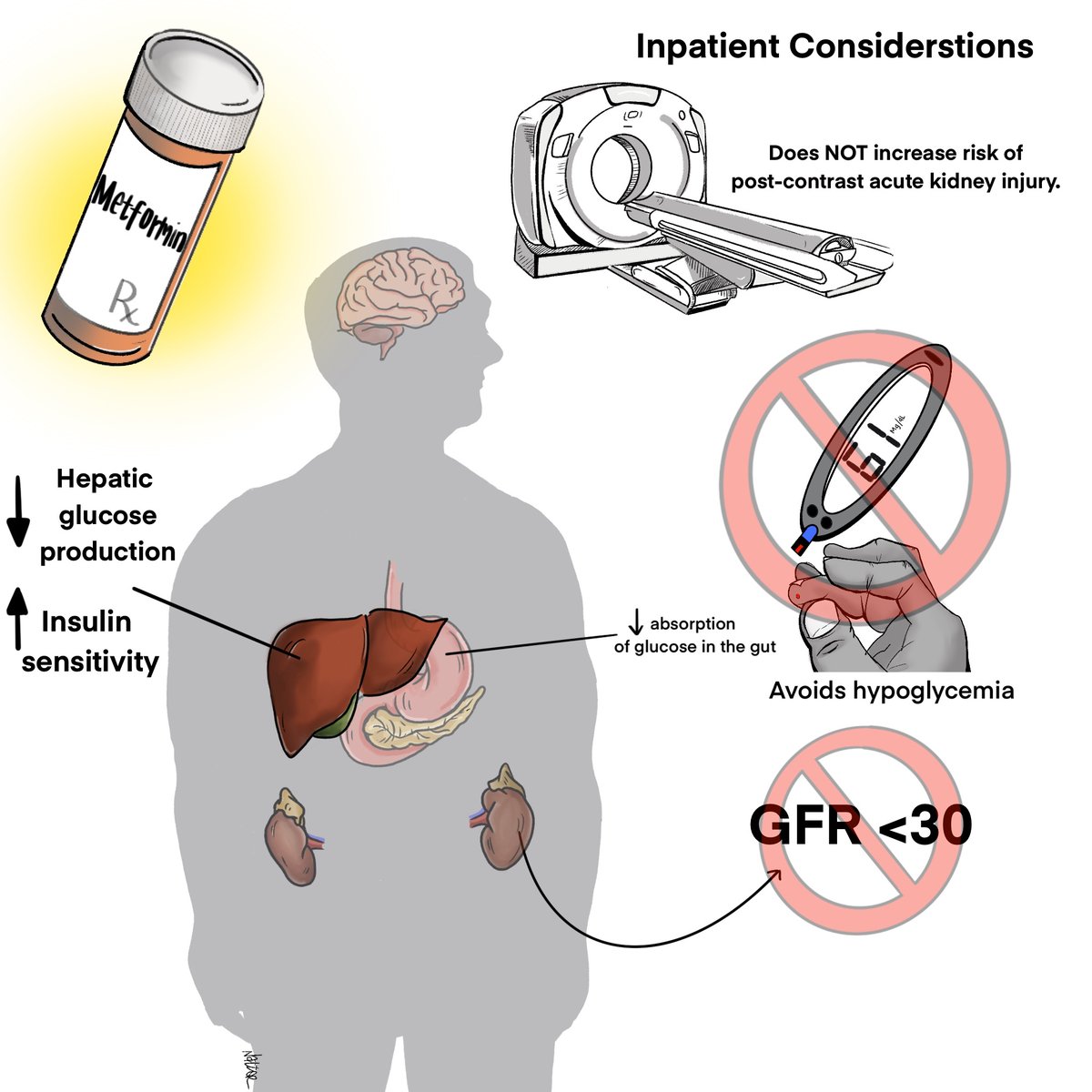
1/🚨 New #MindtheGap Episode🚨
#MedTwitter, Can you use oral diabetes meds in the hospital? If so, which ones?!
🎶Listen on any podcast app!
iTunes: bit.ly/coreimpodcast
Show Notes: bit.ly/3mGXXRG
CME/MOC: bit.ly/3oVhwbI
#MedTwitter, Can you use oral diabetes meds in the hospital? If so, which ones?!
🎶Listen on any podcast app!
iTunes: bit.ly/coreimpodcast
Show Notes: bit.ly/3mGXXRG
CME/MOC: bit.ly/3oVhwbI

2/ What about DPP-4s?
Usually well tolerated because they ONLY release insulin with a glucose load
So we don’t have to be too concerned if the patient will be NPO!
Usually well tolerated because they ONLY release insulin with a glucose load
So we don’t have to be too concerned if the patient will be NPO!

4/ What about SGLT-2 inhibitors? #Flozinators
Here we do have to be mindful to PO intake inpatient and possibility of euglycemic DKA
Here we do have to be mindful to PO intake inpatient and possibility of euglycemic DKA

5/ Kudos to the amazing team |
Hosts: @SatyaPatelMD, @TylerLarsenMD | Expert: Dr. Guillermo Umpierrez | Peer Review: Dr. Jane Weinreb, Dr. Amanda Klinger| Graphic: @mike_natter | Audio Editor: Max Had
#MedTwitter, Like, Comment, Retweet with your practice with oral DM meds inpt!
Hosts: @SatyaPatelMD, @TylerLarsenMD | Expert: Dr. Guillermo Umpierrez | Peer Review: Dr. Jane Weinreb, Dr. Amanda Klinger| Graphic: @mike_natter | Audio Editor: Max Had
#MedTwitter, Like, Comment, Retweet with your practice with oral DM meds inpt!
• • •
Missing some Tweet in this thread? You can try to
force a refresh





















